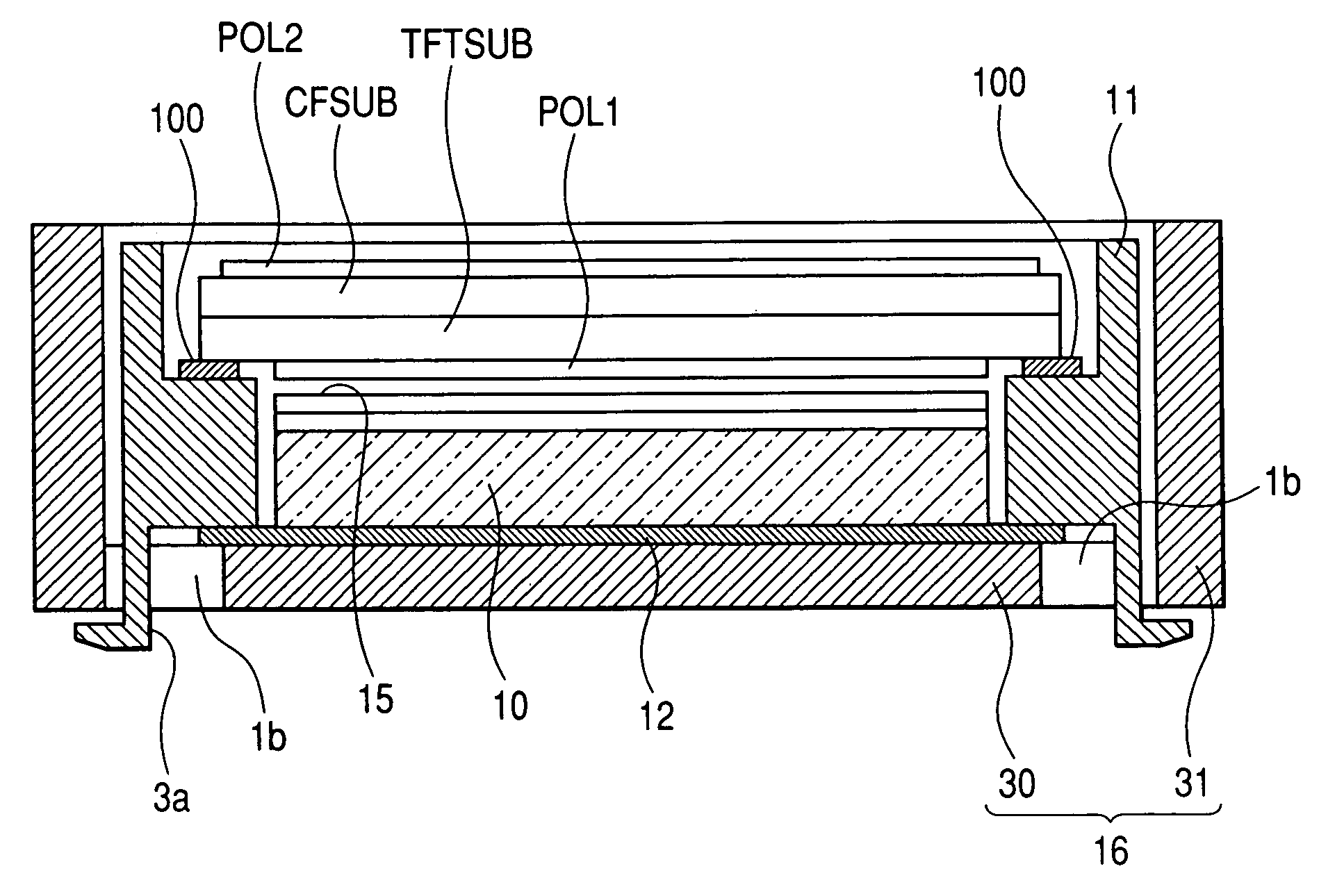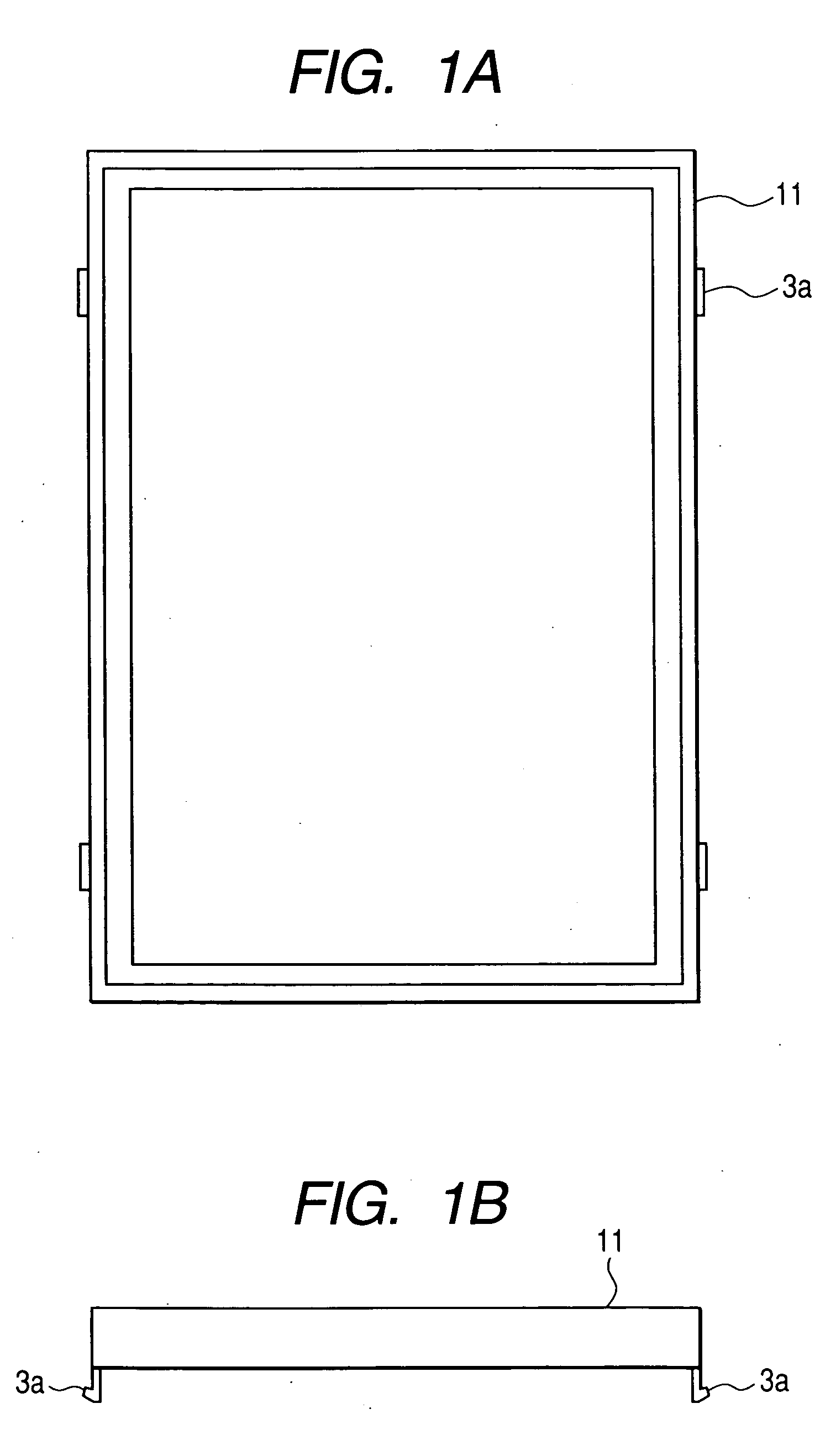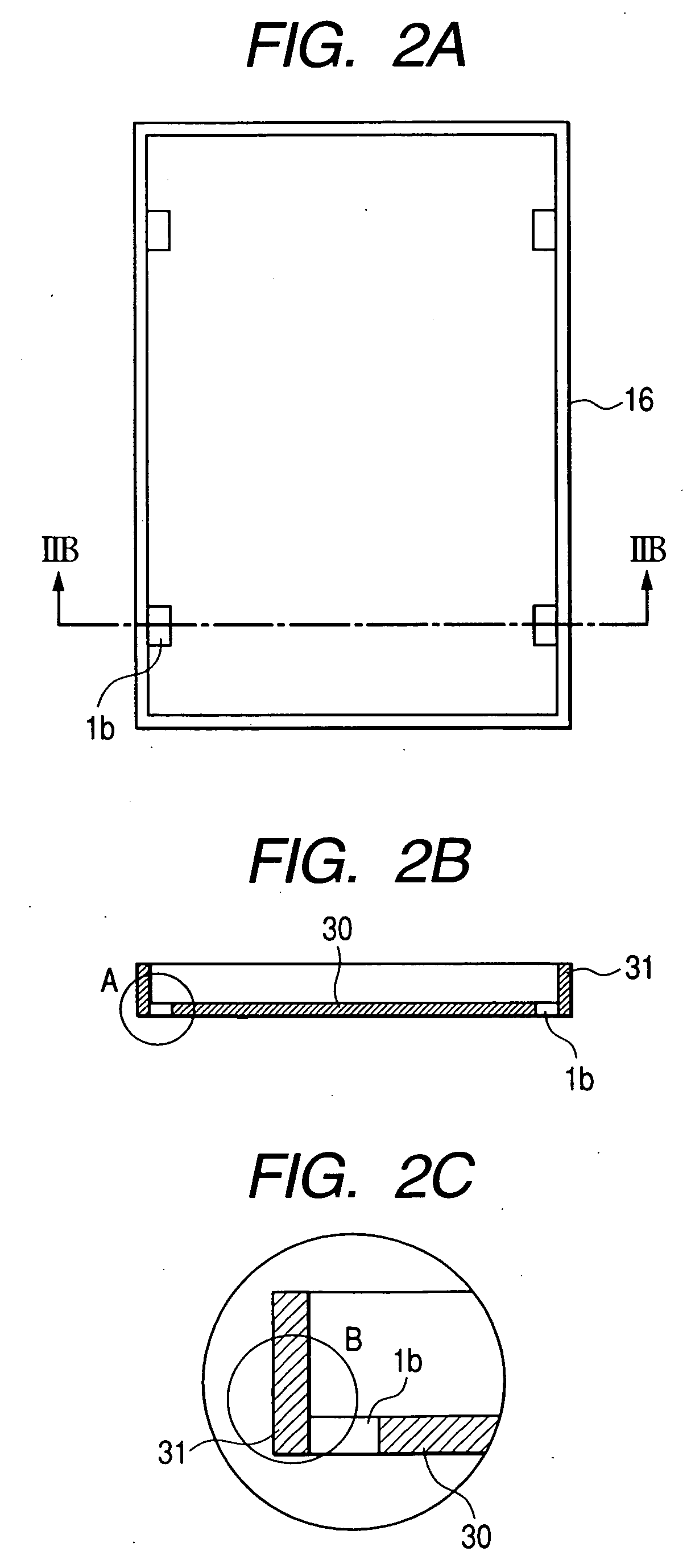Liquid crystal display device
- Summary
- Abstract
- Description
- Claims
- Application Information
AI Technical Summary
Benefits of technology
Problems solved by technology
Method used
Image
Examples
embodiment 1
[0089] As in the case of the liquid crystal display panel LCD illustrated in FIGS. 16A and 16B, a liquid crystal display panel LCD in accordance with Embodiment 1 is fabricated by attaching together a glass substrate TFTSUB provided with thin film transistors, drain lines, gate lines and others (not shown) and a glass substrate CFSUB provided with a counter electrode, color filters and others (not shown) with a sealing agent (not shown) interposed therebetween, then filling a liquid crystal material (not shown) into a space between the two glass substrates TFTSUB, CFSUB, and sealing off the space, and then attaching polarizing sheets POL1 and PLO2 on the outer surfaces of the two glass substrates TFTSUB and CFSUB, respectively.
[0090] Since the present invention does not relates to an internal structure of the liquid crystal display panel LCD, the explanation of the details of the internal structure is omitted. The present invention is applicable to liquid crystal display panels LCD...
embodiment 2
[0100] Prior to explaining Embodiment 2, a problem will be explained which may arise in Embodiment 1. FIGS. 4A and 4B are rear views of the above-explained liquid crystal display module of Embodiment 1, FIG. 4A is a rear plan view of the liquid crystal display module, and FIG. 4B is an enlarged view of a circled portion, designated C, of FIG. 4A. FIG. 4C is an illustration for explaining the problem which may arise in the configuration of Embodiment 1 shown in FIG. 3C.
[0101] In the configuration of Embodiment 1, as shown in FIG. 3C, a rectangular light reflective sheet 12 is disposed on the bottom portion 30 of the frame 16. In this case, a step 33 is formed on a surface of the mold 11 on its light-reflective-sheet-12 side for positioning the light reflective sheet 12. As shown in FIGS. 3C and 4B, the edge portion (the edge portion of the long side) of the light reflective sheet 12 and the step 33 is disposed over the through hole 1b made in the bottom portion 30 of the frame 16. I...
embodiment 3
[0107] As in the case of the frame 16 shown in FIG. 18D and utilized for the prior art explained in connection with FIGS. 17A to 19C, the frame 16 utilized for this Embodiment 3 is provided with through holes 1b extending from the bottom portion 30 of the frame 16 into the sidewall 31 of the frame 16. However, in Embodiment 3, the size of the through holes 1b in the frame 16 are reduced such that the edge portions (the edge portions of the long sides) of the light reflective sheet 12 or the steps 33 of the mold 11 are not visible through the through holes 1b made in the bottom portion 30 of the frame 16.
[0108]FIG. 8A is an illustration for explaining the frame 16 in accordance with Embodiment 3, and shows a through hole 1b made in the bottom portion 30 of the frame 16. For comparison purposes, FIG. 8B is an illustration for showing the through hole 1b made in the prior art frame 16 explained in connection with FIGS. 17A to 19C. Here FIGS. 8A and 8B are enlarged views of the through...
PUM
 Login to View More
Login to View More Abstract
Description
Claims
Application Information
 Login to View More
Login to View More - R&D
- Intellectual Property
- Life Sciences
- Materials
- Tech Scout
- Unparalleled Data Quality
- Higher Quality Content
- 60% Fewer Hallucinations
Browse by: Latest US Patents, China's latest patents, Technical Efficacy Thesaurus, Application Domain, Technology Topic, Popular Technical Reports.
© 2025 PatSnap. All rights reserved.Legal|Privacy policy|Modern Slavery Act Transparency Statement|Sitemap|About US| Contact US: help@patsnap.com



